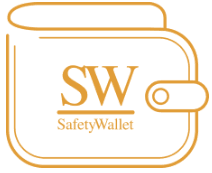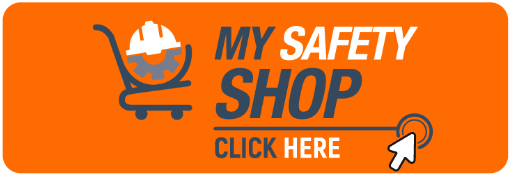Food Drinks and Tobacco Industry Emergency Preparedness

Emergency Preparedness in the Food, Drinks and Tobacco Industry in South Africa.
In the complex and fast-paced sectors of food, drinks and tobacco in South Africa, emergency preparedness is not just a regulatory obligation but a critical element of operational resilience and employee safety. The significance of comprehensively planned and executed emergency preparedness measures cannot be overstated. It encompasses the ability to respond swiftly and efficiently to unforeseen events such as fires, chemical spills, natural disasters, and industrial accidents. We examine the imperative of emergency preparedness within these industries, outlining the roles of key players, applicable legislation, potential consequences of non-compliance, and common challenges. Additionally, it explores how MAKROSAFE, an authorised dealership of SafetyWallet, can offer invaluable assistance, supported by real-life examples.
The Importance of Emergency Preparedness
The food, drinks, and tobacco industries involve a plethora of processes – from raw material handling to manufacturing, storage, and distribution – each carrying its own set of risks. Emergency preparedness serves to mitigate these risks, ensuring the safety of employees, protection of property, and continuity of business operations. It also safeguards consumers by preventing contamination of food and beverage products. In essence, a robust emergency preparedness plan is a linchpin of a resilient safety culture.
Any questions? Kindly leave your details for one of our Expert Consultants to give you a no-obligation Call.
Legislative Framework
Emergency preparedness in South Africa is governed by several pieces of legislation and standards, notably:
The Occupational Health and Safety Act, 1993 (OHSA): Mandates employers to create a safe working environment, which implicitly includes having emergency preparedness and response plans.
The National Building Regulations and Building Standards Act, 1977: Requires buildings to be designed and constructed in a manner that provides safety in case of fire, including adequate escape routes.
SANS 10139: Provides guidelines for the design, installation, and maintenance of fire detection and alarm systems in buildings.
Non-compliance with these regulations can lead to dire consequences, including legal penalties, operational shutdowns, and severe reputational damage. More critically, it can result in loss of life, serious injuries, and significant property damage in the event of an emergency.
Roles and Responsibilities
Effective emergency preparedness involves a coordinated effort from various role players within an organisation:
Employers: Responsible for the overarching implementation of emergency plans, ensuring resources and training are provided.
Health and Safety Representatives: Play a crucial role in identifying potential emergency scenarios and contributing to the development and review of emergency plans.
Emergency Coordinators and Response Teams: Designated employees trained to lead and carry out specific response activities during emergencies.
Employees: Required to familiarise themselves with emergency procedures, participate in fire drills, and follow instructions during an emergency.
Potential Pitfalls and Challenges
Several challenges can compromise the effectiveness of emergency preparedness, including:
Inadequate Risk Assessment: Failing to identify all potential emergencies can leave organisations ill-prepared for unforeseen events.
Lack of Training and Resources: Without regular drills and adequate resources, such as emergency equipment and signage, response efforts may falter when needed most.
Poor Communication: Inefficient communication channels can hinder the dissemination of critical information during an emergency.
Emergency evacuation procedures, fire drills, and other evacuation drills constitute the backbone of workplace safety, especially in industries that are inherently risk-laden such as the food, drinks, and tobacco sectors. Ensuring the safety of employees, contractors, visitors, and anyone present on the premises during an emergency is not only a moral obligation but a legal requirement in many jurisdictions, including South Africa. A meticulously crafted and rigorously implemented emergency evacuation plan stands as a pivotal measure in this context.
Emergency Evacuation Procedure
The emergency evacuation procedure is a predefined set of actions to be taken in the event of an emergency to safely guide individuals out of danger areas to designated safe assembly points. The procedure typically encompasses the following steps:
- Alarm: Clearly define what triggers the alarm and the means of activating it. Employees must recognise different alarm sounds if there are signals for different emergencies (e.g., fire, chemical spill).
- Evacuation: Instructions on how to shut down equipment (if safe and applicable), and the designated evacuation routes from all areas of the facility. These routes should be clearly marked and free of obstructions at all times.
- Assembly Points: Identification and marking of safe assembly points outside the building or hazard area. All employees should know their nearest assembly points and alternatives if the primary is compromised.
- Role Assignments: Appointment of responsibilities, such as floor wardens, first aiders, and individuals tasked with ensuring all personnel are accounted for at the assembly point.
- Communication: Procedures for informing emergency services and internal communication during the evacuation.
Fire Drills and Other Evacuation Drills
Conducting regular fire drills and evacuation drills is essential to ensure everyone in the facility is familiar with the emergency evacuation procedure and can respond quickly and calmly in an actual emergency. Key elements to focus on include:
Frequency: The Occupational Health and Safety regulations may specify how often drills should occur, but at a minimum, bi-annual drills are recommended.
Variety: Incorporate different scenarios into drills to prepare employees for various emergency types, such as fires, natural disasters, or chemical releases.
Realism: Try to simulate real emergency conditions without causing panic or actual harm. This might include the use of smoke machines during fire drills or practicing evacuation in the dark.
Review and Improvement: After each drill, gather feedback from participants and observers to identify areas for improvement. Update the evacuation plan and procedures based on this feedback.
Emergency Evacuation Plan
An effective emergency evacuation plan serves as a blueprint for safe escape in the event of an emergency. It should include:
Detailed Floor Plans: Displaying evacuation routes, emergency exits, assembly points, locations of fire extinguishers, and manual alarm points.
Specific Procedures: Tailored to different types of emergencies, acknowledging that the response to a fire may differ from that of a flood or chemical spill.
Contact Information: For emergency services, as well as internal contacts responsible for the plan's execution.
Accessibility Requirements: Provisions for the safe evacuation of individuals with disabilities.
Training and Communication Plan: Ensuring all employees receive training on the plan and that new hires are briefed as part of their orientation.
If you have any questions, please feel free to speak to one of our Experts
How MAKROSAFE Can Assist
MAKROSAFE, leveraging its partnership with SafetyWallet, provides a comprehensive suite of services to bolster emergency preparedness:
Risk Assessment Consultation: Assisting businesses in identifying all potential emergency scenarios specific to their operations.
Emergency Plan Development and Review: Crafting tailored emergency response plans, including evacuation procedures, emergency contact information, and assembly point details.
Training and Drills: Conducting regular emergency response training and drills for all employees’, ensuring preparedness is maintained.
Compliance Audit and Assistance: Ensuring businesses meet all legal requirements related to emergency preparedness, thereby avoiding potential penalties.
Real-Life Solutions
A Beverage Production Facility: Faced with the challenge of an outdated emergency plan, the facility engaged MAKROSAFE. A comprehensive risk assessment identified previously overlooked scenarios. MAKROSAFE assisted in developing a robust emergency response plan, complete with evacuation routes, assembly points, and a dedicated response team. The outcome was an enhanced state of preparedness and compliance with OHSA requirements.
A Tobacco Manufacturing Plant: After experiencing a minor fire incident that revealed gaps in their emergency response, the plant sought MAKROSAFE’s expertise. MAKROSAFE implemented an in-depth training program for emergency coordinators and facilitated regular drills. These measures dramatically improved response times and efficiency, significantly mitigating risks associated with potential future incidents.
Emergency preparedness is a fundamental aspect of operating within the food, drinks, and tobacco industries in South Africa. It necessitates meticulous planning, ongoing training, and a culture of safety awareness and responsiveness. By engaging services such as MAKROSAFE, businesses can ensure not only compliance with legal standards but also the establishment of a safety-first approach to operations. Through a combination of expert guidance, training, and tailored emergency plans, MAKROSAFE and SafetyWallet empower businesses to effectively manage crises, safeguard lives, property, and ensure the sustained success of their operations.
Effective emergency preparedness through comprehensive evacuation procedures, regular drills, and a well-documented evacuation plan is essential for the safety and well-being of everyone in the workspace. With the expertise and support of MAKROSAFE and SafetyWallet, businesses in the food, drinks, and tobacco industry can ensure they are adequately prepared for any emergency, safeguarding their most valuable asset - their people.
Make Safety a Priority Today!
Any questions? Speak to one of our Experts
Let's empower your workforce to work safely, every day! Unlock a Safer Educational Realm with SafetyWallet Benefits.
As a subscriber of SafetyWallet, you're entitled to a 25% discount on our health and safety courses. The value of safety cannot be overstated, and we're committed to supporting institutions in fostering a secure environment. Take advantage of your SafetyWallet subscription and enhance safety standards within your institution. Our courses are also available for purchase on My Safety Shop, ensuring easy access to the training you need.
MAKROSAFE, as a proud SafetyWallet Authorised Dealership of SafetyWallet, offers a free consultation to assess your current training needs and develop a customised training plan. Contact us today and let's build a brighter, safer future for the South African Food, Drinks, and Tobacco Industry, together. Click on the image below to find a SafetyWallet Solution that suits your business (Branch/Site specific) and get the 21 benefits that includes FREE Health and Safety E-Learning for all staff along with the subscription:
To find out what other Additional Services we offer, please click on the picture below:
SAFETYWALLET In Co-operation with MAKROSAFE and MY SAFETY SHOP





